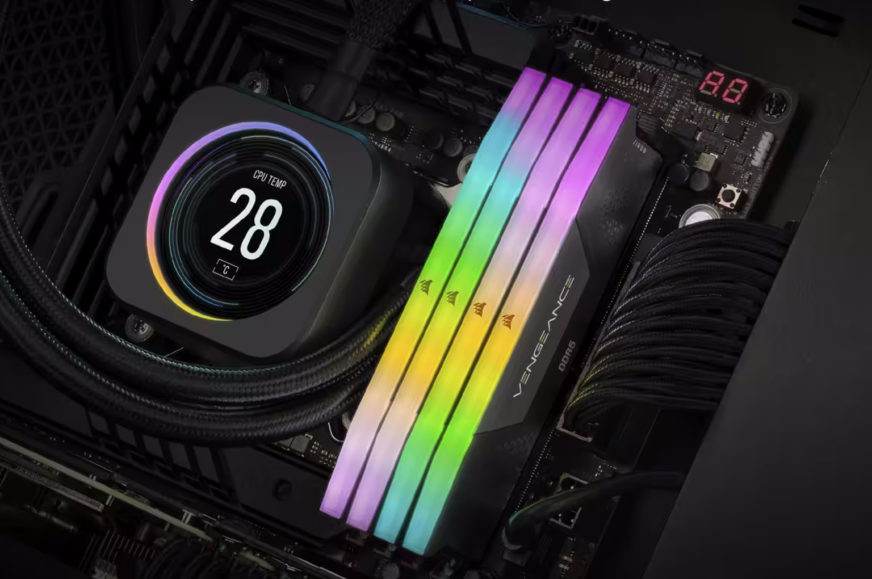New memory modules with non-binary capacity only work on Intel platform so far
In the past, Intel processors could not run newer higher-capacity DDR2 and DDR3 modules, while AMD processors worked. That’s why we were sort of assuming that the currently appearing DDR5 modules with unusual “non-binary” capacities would just automatically work on AMD platforms. But that’s not true, it seems that they only work with Intel processors for now and Ryzen 7000s will only be able to use them after a future update.
During the release of these modules, press releases were issued by some board manufacturers announcing the addition of support for these modules on Intel 600 and 700 chipset boards for Core 12th and 13th generation processors. Or even support being already present in current BIOS versions. However, there was no mention of support on the AMD platform. It turns out there was a reason for that. These modules do not work on AM5 boards yet.
It’s probably not an issue of reaching the maximum supported capacity of 128GB on mainstream boards with four slots, but rather something to do with the 24Gb DRAM chips themselves. There was a report on Twitter from enthusiast and leaker MEGAsizeGPU who tried a 48GB Corsair Vengeance set (a pair of 24GB modules), and even at that total capacity, the RAM didn’t work.
They state that their Asus ROG Strix B650E-E Gaming Wi-Fi recognizes the modules and shows the correct capacity after entering the UEFI. Actually, the fact that the UEFI can be accessed and the monitor display works, itself shows there is some basic functionality working already, so the system can run with the memory to some extent. But after installing the modules, Windows doesn’t boot, it fails during startup. This would usually be a sign of a some software issue, but here it’s probably due to some interaction of software with the processor, RAM and board firmware.
strix B650-E and 7600X can fully recognize the 24G*2 ram in the bios.
But it can’t boot normally to the OS with these new 24G modules.
Still need amd and mobo brands to release new bios to fix it. pic.twitter.com/x5nJp3GfF5— MEGAsizeGPU (@Zed__Wang) March 7, 2023
What is preventing Windows from booting is not likely to be a fatal incompatibility and support for these modules should still be made available by board manufacturers or AMD directly, at some point in the future. However, it’s a pity (and a mistake) that the support wasn’t ready before the release of these products as AMD should have known about this issue and the coming hardware that would trigger it in advance. These non-binary sized DRAM chips and 24GB/48GB modules were first announced years ago.
48GB and 24GB modules should work with the next AGESA update
According to another Twitter source, Chi11eddog, support for these memory modules should allegedly be forthcoming in the next version of AMD’s AGESA code – according to Chi11eddog, the version in question should be AGESA 1.0.0.7 for the AM5 platform. The board manufacturers will need to release new firmware updates based on this AGESA for the individual AM5 boards after that. However, we don’t yet have information on when to expect these AGESA 1.0.0.7-based UEFI updates. But at least it looks like a solution is in the works, even if it ‘s going to arrive somewhat late.
Sources: Chi11eddog, MEGAsizeGPU, Tom’s Hardware (1, 2)
English translation and edit by Jozef Dudáš
⠀











